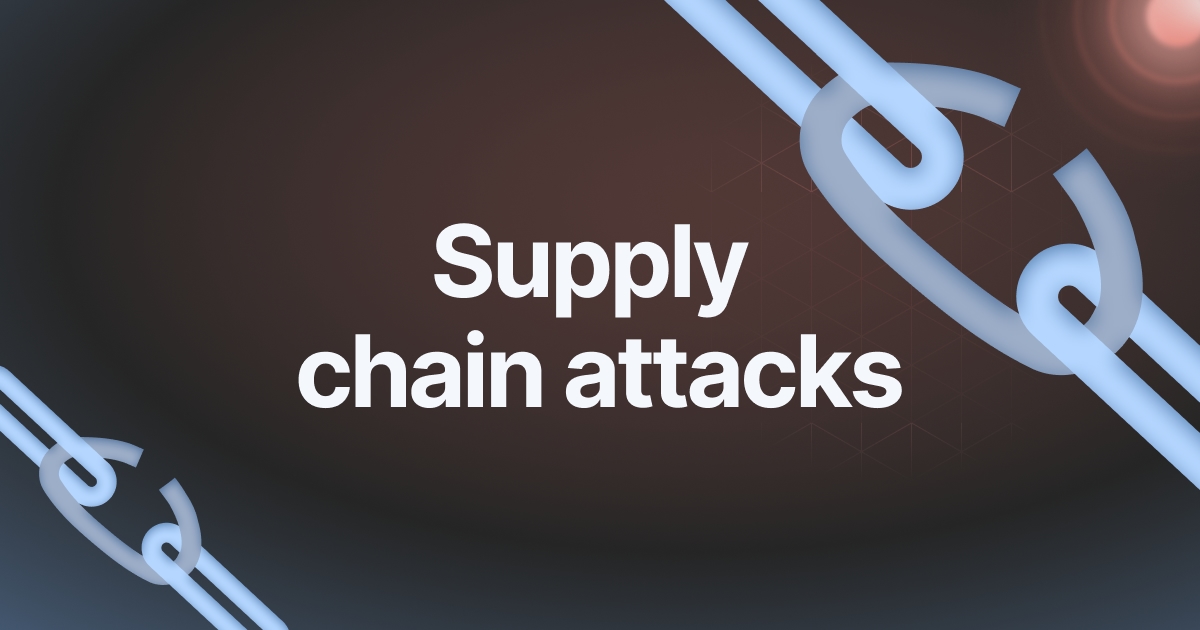In the era of interconnected technology of our time, the notion of the notion of a “perimeter” that safeguards your information is quickly being replaced by technology. A new breed of cyberattack, the Supply Chain Attack, has emerged, exploiting the complex web of software and services that businesses rely on. This article delves into the world of supply chain attacks, exploring the growing threat landscape, your organization’s potential vulnerabilities, and crucial actions you can take to increase your security.

The Domino Effect: A Tiny Flaw can Cripple your Business
Imagine that your business doesn’t use an open-source software library that has vulnerabilities in security. However, the company that provides analytics-related services for data, upon which you rely heavily. This seemingly minor flaw can turn into your Achilles’ heel. Hackers exploit this vulnerability to gain access to service provider systems. They now have a potential backdoor into your company’s systems, thanks to an invisibly third-party connection.
The domino effect is an excellent illustration of the insidious character of supply chain hacks. They target the interconnected ecosystems businesses depend on. Infiltrating systems through vulnerabilities in partner software, Open-Source libraries and even Cloud-based Service (SaaS).
Why Are We Vulnerable? What is the reason we are vulnerable?
Supply chain attacks are a result of the same forces which fueled the current digital economy with the growing use of SaaS and the interconnectedness between software ecosystems. The ecosystems that are created are so complicated that it’s difficult to monitor all the code that an organization can interact with even in an indirect way.
Beyond the Firewall – Traditional Security Measures Don’t Work
It’s no longer enough to rely on conventional cybersecurity measures to secure your systems. Hackers know how to find the weakest link, elude perimeter security and firewalls to gain access to your network through trusted third-party vendors.
Open-Source Surprise There is a difference between free and paid code. free code is created equal
The open-source software is an extremely loved product. This presents a vulnerability. While open-source libraries offer numerous benefits, their widespread use and reliance on developers who volunteer to work for them can lead to security threats. Unpatched vulnerabilities in widely used libraries could expose a variety of organizations who have integrated them into their systems.
The Invisible Athlete: How to Spot a Supply Chain Attack
Supply chain attacks are difficult to spot due their nature. Certain warning signs could raise the alarm. Strange login patterns, strange information activity, or unanticipated software updates from third party vendors could signal an insecure ecosystem. A major security breach at a library or a service provider widely used is a good reason to take immediate action.
A Fortress to build inside the Fishbowl: Strategies to Mitigate the Supply Chain Risk
What could you do to improve your defenses? Here are a few crucial steps to think about:
Do a thorough analysis of your vendor’s security methods.
The Map of Your Ecosystem Create an inventory of all the software, libraries and services that your business utilizes, whether directly or indirectly.
Continuous Monitoring: Check all your systems for suspicious activities and follow security updates from third-party vendors.
Open Source with Attention: Be mindful when installing libraries which are open source, and give priority to those with good reviews as well as active communities.
Transparency increases trust. Encourage your vendors’ adoption of robust security practices.
The Future of Cybersecurity: Beyond Perimeter Defense
The increasing threat of supply chain breaches demands an entirely new way of thinking about how companies tackle cybersecurity. It’s no longer sufficient to concentrate on protecting your personal perimeter. Organizations must move towards an overall approach to collaborate with vendors, increasing transparency in the software industry, and actively mitigating risks throughout their interconnected supply chain. Recognizing the threat of supply-chain attacks and strengthening your defenses will help you to ensure your business’s security in an increasingly interconnected and complex digital landscape.
